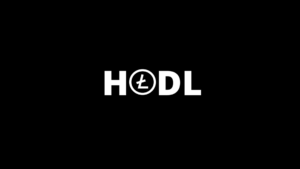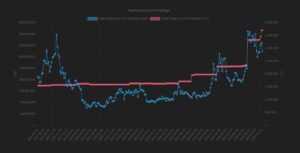Chairman Jerome Powell said during a testimony of the US House Financial Services Committee on Wednesday that he views ‘payment stablecoins as a form of money’, contradicting current SEC chairman Gary Gensler.
Gensler vs Powell
His statements are in contradiction of SEC chairman Gary Gensler, who labelled Binance’s BUSD a security in a filing in February. The internal contradiction in US agencies requires resolution, but indicates that the US Federal government is potentially picking winners and losers in an effort to steer the growth trajectory of the nascent asset class.
Binance and the SEC struck a provisory agreement on June 15,which was accepted on June 19. BlackRock filed for a Spot Bitcoin ETF on June 15, which was quickly followed by the launch of EDX exchange – backed by institutional behemoths Charles Schwab, Fidelity and Citadel Securities (second only to BlackRock).
Powell acknowledges stablecoins
Federal Reserve chairman Jerome Powell gave a clear sign that stablecoins such as USD Tether and USDC are in the process of becoming legal tender, noting that a Federal role would be ‘appropriate’. The apparent change in tone on the cryptocurrency space shortly after the BlackRock ETF filing is certainly noteworthy; only once was an ETF filing from BlackRock rejected.
“We do see payment stablecoins as a form of money, and in all advanced economies, the ultimate source of credibility in money is the central bank,” the Fed chair said in a Wednesday testimony during the U.S. House Financial Services Committee’s semi-annual monetary policy meeting, noting, “We believe it would be appropriate to have quite a robust federal role.”
The Chairman’s comments came in response to Rep. Maxine Waters, a committee member, who asked Powell for his reaction about a proposed stablecoin bill first launched by Republicans in April 2023. If passed, the law would create a legal framework for stablecoins in the United States.
Waters highlighted that stablecoins are a “new form of currency” that people have adopted as a preferred payment method, and questioned Powell as to whether he believes stablecoins will be under the purview of the Federal Reserve.
According to Powell, the “ultimate source of credibility in money is the central bank,” with the Federal Reserve playing a “robust federal role” in classifying the future of any form of money, including stablecoins. Not all are convinced of this ‘credibility’, however. Legendary investor Stanley Druckenmiller, a known Bitcoin bull, has bet against the US Dollar, saying that it has been “weaponised” against US adversaries on a global scale.
The FED chairman added: “leaving [the Fed] with a weak role in allowing a lot of private money creation at the state level would be a mistake”.
Notably, stablecoins are not decentralised cryptocurrencies like Bitcoin or Litecoin, but company-run fiat-pegged tokens built on various public blockchains such as Tron, Ethereum or Kava. The main stablecoins in use today are USD Tether (USDT), followed by USD Coin (USDC).
CBDC vs USDT
Contrary to proposed central bank digital currencies, which are opaque and do away with human rights, privatised stablecoins could fit within a regulatory framework. Through appropriate separation of powers and public company audits, a space appears to have opened for stablecoin usage. So far, USD Tether has made strides towards becoming more transparent by publishing assurances every quarter.
Tether has also supported the development of Bitcoin infrastructure, network security via mining, and nation-state adoption of Bitcoin as well as rolling out user-centric privacy apps and features such as Keet.io. On the other hand, the IMF and World Bank have pushed nations deeper into debt, bankrupting entire nations for decades with no end in sight.
Join the telegram channel for updates, charts, ideas and deals.
Did you like the article? Share it!


